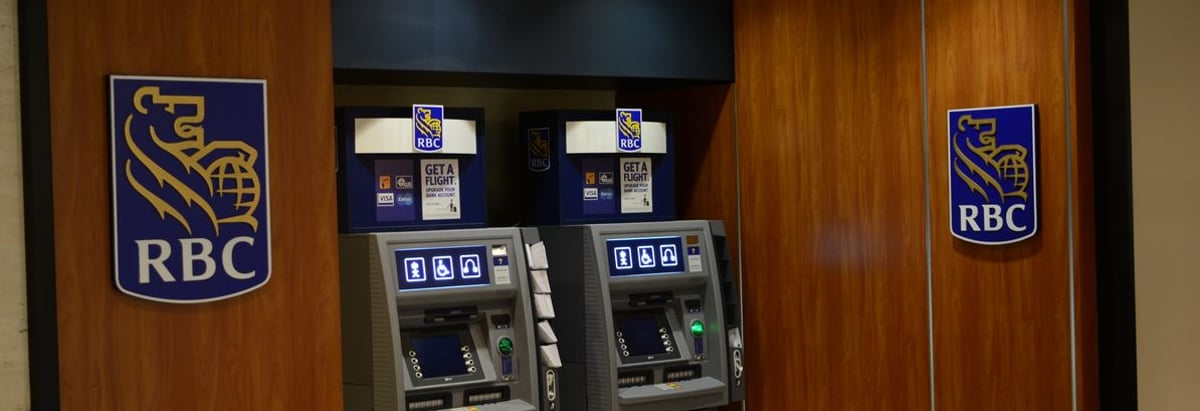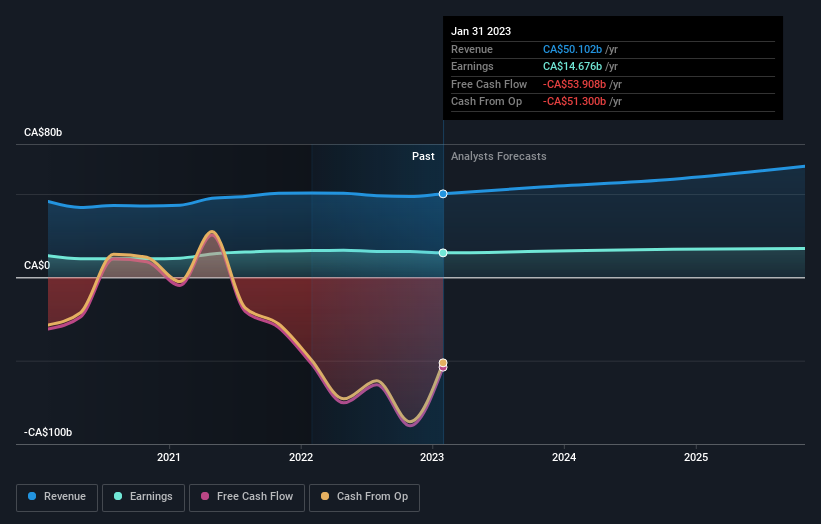Royal Bank of Canada's (TSE:RY) 4.3% loss last week hit both individual investors who own 53% as well as institutions

Key Insights
- Royal Bank of Canada's significant retail investors ownership suggests that the key decisions are influenced by shareholders from the larger public
- 35% of the business is held by the top 25 shareholders
- Institutional ownership in Royal Bank of Canada is 47%
To get a sense of who is truly in control of Royal Bank of Canada (TSE:RY), it is important to understand the ownership structure of the business. And the group that holds the biggest piece of the pie are retail investors with 53% ownership. That is, the group stands to benefit the most if the stock rises (or lose the most if there is a downturn).
Following a 4.3% decrease in the stock price last week, retail investors suffered the most losses, but institutions who own 47% stock also took a hit.
Let's take a closer look to see what the different types of shareholders can tell us about Royal Bank of Canada.
See our latest analysis for Royal Bank of Canada

What Does The Institutional Ownership Tell Us About Royal Bank of Canada?
Institutional investors commonly compare their own returns to the returns of a commonly followed index. So they generally do consider buying larger companies that are included in the relevant benchmark index.
Royal Bank of Canada already has institutions on the share registry. Indeed, they own a respectable stake in the company. This implies the analysts working for those institutions have looked at the stock and they like it. But just like anyone else, they could be wrong. If multiple institutions change their view on a stock at the same time, you could see the share price drop fast. It's therefore worth looking at Royal Bank of Canada's earnings history below. Of course, the future is what really matters.

Hedge funds don't have many shares in Royal Bank of Canada. The company's largest shareholder is BMO Asset Management Corp., with ownership of 5.0%. In comparison, the second and third largest shareholders hold about 3.7% and 2.8% of the stock.
On studying our ownership data, we found that 25 of the top shareholders collectively own less than 50% of the share register, implying that no single individual has a majority interest.
Researching institutional ownership is a good way to gauge and filter a stock's expected performance. The same can be achieved by studying analyst sentiments. There are a reasonable number of analysts covering the stock, so it might be useful to find out their aggregate view on the future.
Insider Ownership Of Royal Bank of Canada
While the precise definition of an insider can be subjective, almost everyone considers board members to be insiders. Management ultimately answers to the board. However, it is not uncommon for managers to be executive board members, especially if they are a founder or the CEO.
I generally consider insider ownership to be a good thing. However, on some occasions it makes it more difficult for other shareholders to hold the board accountable for decisions.
Our data suggests that insiders own under 1% of Royal Bank of Canada in their own names. As it is a large company, we'd only expect insiders to own a small percentage of it. But it's worth noting that they own CA$22m worth of shares. It is always good to see at least some insider ownership, but it might be worth checking if those insiders have been selling.
General Public Ownership
The general public, mostly comprising of individual investors, collectively holds 53% of Royal Bank of Canada shares. This level of ownership gives investors from the wider public some power to sway key policy decisions such as board composition, executive compensation, and the dividend payout ratio.
Next Steps:
I find it very interesting to look at who exactly owns a company. But to truly gain insight, we need to consider other information, too.
I like to dive deeper into how a company has performed in the past. You can find historic revenue and earnings in this detailed graph.
Ultimately the future is most important. You can access this free report on analyst forecasts for the company.
NB: Figures in this article are calculated using data from the last twelve months, which refer to the 12-month period ending on the last date of the month the financial statement is dated. This may not be consistent with full year annual report figures.
New: AI Stock Screener & Alerts
Our new AI Stock Screener scans the market every day to uncover opportunities.
• Dividend Powerhouses (3%+ Yield)
• Undervalued Small Caps with Insider Buying
• High growth Tech and AI Companies
Or build your own from over 50 metrics.
Have feedback on this article? Concerned about the content? Get in touch with us directly. Alternatively, email editorial-team (at) simplywallst.com.
This article by Simply Wall St is general in nature. We provide commentary based on historical data and analyst forecasts only using an unbiased methodology and our articles are not intended to be financial advice. It does not constitute a recommendation to buy or sell any stock, and does not take account of your objectives, or your financial situation. We aim to bring you long-term focused analysis driven by fundamental data. Note that our analysis may not factor in the latest price-sensitive company announcements or qualitative material. Simply Wall St has no position in any stocks mentioned.
About TSX:RY
Royal Bank of Canada
Operates as a diversified financial service company worldwide.
Solid track record with excellent balance sheet and pays a dividend.
Similar Companies
Market Insights
Community Narratives



